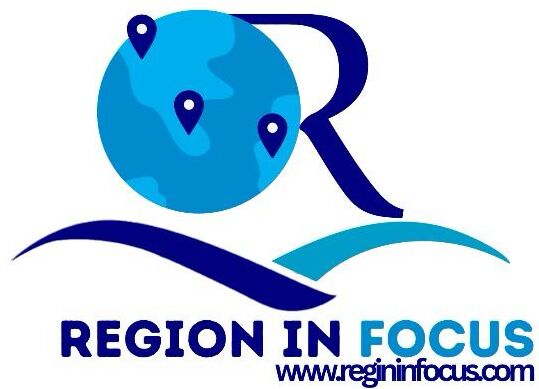Over the last several years, the term “feminist foreign policy” has become an impressive trend in the context of diplomatist and academia. There are the examples of several countries that have announced their intention to incorporate gender equality into the core of their foreign policy agenda: Sweden, Canada, and France, Mexico, Spain, and Germany. Such a new discourse is an indication of the theme of focusing representation on issues of human rights, inclusivity, and social justice, rather than the conventional, security-focused, view of international relations. Nevertheless, a serious question comes out: has the shifting focus on gender in the foreign policy become a real change in the policy of the world, or a mere show of progressive ideals, but without any significant transformation?
The History and Development of a Feminist Foreign Policy.
Sweden was the first to state the notion of a feminist foreign policy (FFP) in 2014, when the office of Foreign Minister was held by Margot Wallstrom. It was an attempt to systematically inject gender equality into every aspect of foreign policy, both peacebuilding and trade and development assistance. The Swedish model was on the basis of the three R of Rights, Representation, and Resources- the proposal was the protection of the rights of women, the equal right to represent and equal right to the resources.
The model used in Sweden made other nations emulate it. In 2017, Canada unveiled a Feminist International Assistance Policy, France introduced its Feminist Diplomacy in 2019, and Mexico has been the first country in the Global South to establish an explicitly feminist foreign policy in 2020. Most recently, Germany also followed suit with the movement in 2023, where intersectionality and diversity are treated as major factors.
Although these policies are a significant shift in international rules making, they also reveal a conflict between normative aspiration and real world execution. The dilemma is on whether these policies are radical or it is nothing more than the packaging of classic agendas in feminist rhetoric.
The Gender-Sensitive Diplomacy Promise.
The consideration of gender approaches to foreign policy can transform the world politics in a profound manner. Studies by certain agencies like the United Nations and the World Bank have always indicated that cultures with more gender equality are those that are peaceful, economically stable, and democratic. The inclusion of women in peace negotiations such as those conducted by women has been associated with long lasting peace agreements.
The objective of gender-sensitive frameworks of foreign policy is to systematize these lessons by making sure that women are not the only beneficiaries of development projects or aid, but they are also able to contribute to the policies that impact their lives. Indicatively, the feminist assistance policy of Canada focuses on giving resources to women to help them gain leadership in conflict prevention and peace building. In the same manner, the policy of Mexico aims at integrating gender equality in its diplomatic missions and developmental projects like training diplomats to be gender sensitive and enhance female representation in the foreign service.
In addition, the emergence of feminist foreign policy is also indicative of an increased understanding that global issues like climate change, migration, and global health crisis cannot be dealt with properly without addressing their gendered consequences. Environments are frequently inequitable to women, especially in developing countries, and women bear the brunt of economic disparities. It is therefore not only a moral obligation but a practical approach to sustainable growth and world peace to address these challenges in a gender manner.
Critiques and Challenges: The Danger of Tokenism.
Feminist foreign policy has had its share of criticism claiming that it is symbolic rather substantive as promised. Numerous observers point to the fact that the gender equality commitments of many states usually only exist in rhetoric and public relations, and not reform. As an example, even though Canada has promoted feminist ideals to the international community, critics cite that it is still selling arms to nations that have a poor record on women right, like Saudi Arabia. On the same note, the feminist diplomacy of France has conflicts in its immigration policies and lack of involvement with the women movements in the Global South.
These inconsistencies suggest that feminist foreign policy can be a branding exercise at times, a means of governments being able to advertise moral leadership without losing traditional geopolitical interests. Such discriminatory use of gender equality challenges the validity of feminist diplomacy and has the potential to make it a farce.
The other problem is the Western-centricity of feminist foreign policy. Most of the best examples are that of Global North which might enforce their own cultural interpretation of gender equality on other cultures. The critics of Global South state that feminist foreign policy should not adopt the Western culture of exporting it; it should empower women on the ground and be sensitive to the different cultures. Otherwise, it will replicate the same hierarchies that it purports to destroy.
Moreover, in bureaucracies, feminist principles tend to be institutionalized to meet opposition. The diplomatic institutions are still male dominated and the representation of the gender views is seen as an afterthought and not as a main policy goal. In the absence of a substantial representation and redistribution of power within these institutions, feminist foreign policy will be a top-down agenda with few grassroots effects.
Beyond Symbolism: What the Real Change Would Be Like.
To make gender in foreign policy more than just a tokenism, it should move beyond the aspects of representation and symbolism to create a change in the process of decision-making and the policy outcomes. This involves a rethinking of power operation in international relations in totality.
To begin with, there must be accountability mechanisms. Feminist foreign policies implemented by governments are meant to be systematically assessed with transparent reporting of such assessments at the government level with clear measurable indicators on gender equality achievement. Sweden, as an example, is regularly reviewing the efficiency of its efforts with the help of detailed reports, which should be extended to other countries.
Second, it is critical to collaborate with civil society. Feminist foreign policy needs to be extended beyond the diplomatic elites to include women rights organization, activists and scholars on the ground. Joint policymaking can be used to make sure that the gender-sensitive policies are based on actual needs instead of idealistic principles.
Third, intersectionality needs to be made a guiding principle. No isolated gender study could be done without the other types of inequalities which include race, class, ethnicity and sexuality among others. A feminist foreign policy must be inclusive and acknowledge the experiences of diverse women, with the voices of the oppressed women taken into consideration.
Finally, the nations should harmonize national and international obligations. Feminist foreign policy becomes illegitimate in cases where domestic policy conflicts with its tenets like states becoming incursionist on gender equality in the international system and negligence of gender based violence in the international system and payment disparities in the home country.
In conclusion: Between Promise and Performance.
The emergence of gender as foreign policy is a milestone as well as a challenge to international relations. On the the one hand, it has been able to put the issues of equality, representation, and human rights on the international agenda. Conversely, its influences are disproportionate and in certain instances cosmetic.
The success of feminist foreign policy as a transformative or tokenism is more of a question of choice through political will, institutional commitment and societal involvement. True change should involve breaking down the established systems of power, equalizing resources, and re-evaluating the nature of security in world politics.
After all the feminist foreign policy does not simply entail the incorporation of women into the pre-existing systems but is rather the redefinition of the systems. When gender equality is a hinged component of how states articulate their interests or execute their influence, and not a far-fetched dream, will the feminist ambition of diplomacy be achieved.


